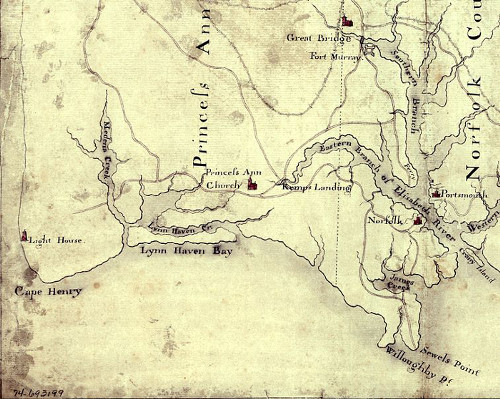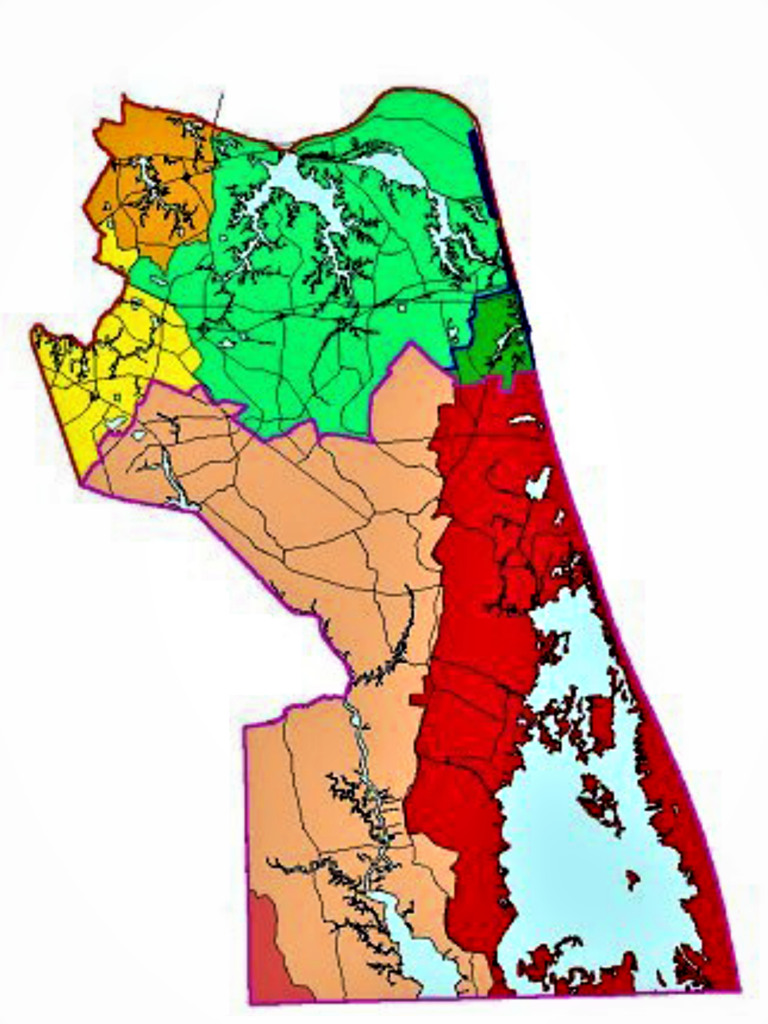
By Mary Reid Barrow
For the most part, we think of Kempsville as a busy modern suburb in a busy young city.
What we usually don’t think about is that Kempsville also is one of the most historic areas in Virginia Beach.
Not only that, but what helps to make Kempsville historic is the Eastern Branch of the Elizabeth River, a river that is often overlooked here. The Eastern Branch snakes east from the mighty Elizabeth herself and over into Virginia Beach.
The Eastern Branch was once wide enough and deep enough to bring colonial sailing ships to Kempsville from Norfolk. You really have to use some magical thinking to imagine that little rivulet you see today under the bridge on Princess Anne Road, west of Witchduck Road, was once that thriving waterway.
In pre-revolutionary times, the ships from Norfolk plied the Eastern Branch of the Elizabeth River to what was known then as Kemp’s Landing, not far from the area where the Princess Anne Road bridge is now. They were delivering goods from England and picking up products, such as tobacco, from farms in what was then Princess Anne County.
Princess Anne County and the resort town of Virginia Beach merged with Princess Anne County in 1963 to create our huge city we know today.
The Skirmish at Kemp’s Landing attests to Kempsville’s historic fame. The skirmish was the first set-to of the Revolutionary War in Virginia. Historic homes clustered in the area also tell the tale of the old days, the most notable being Pleasant Hall and the Carraway House, both built in the 1700’s.
Over time, the Elizabeth River’s Eastern Branch has silted in to become shallow and narrow, a shadow of its former self, yet the waterway is still very important to the city. A large portion of Kempsville drains to the Eastern Branch and and the river forms one of the eight watersheds in Virginia Beach.
Thinking about the Eastern Branch of the Elizabeth River requires just one more touch of magical thinking. It forms the only watershed in Virginia Beach that seemingly drains backwards, carrying our water west to Norfolk and into Hampton Roads before it drains out to the Chesapeake Bay:

To find out more about the Eastern Branch of the Elizabeth River watershed, visit LRNow’s website: https://www.lynnhavenrivernow.org/eastern-branch-of-the-elizabeth-river-watershed/
Do you have a favorite tree or plant with a story to tell? What relationships have you observed between plants and critters? Who eats whom? Who has babies where? Send an email to maryreid@lrnow.org